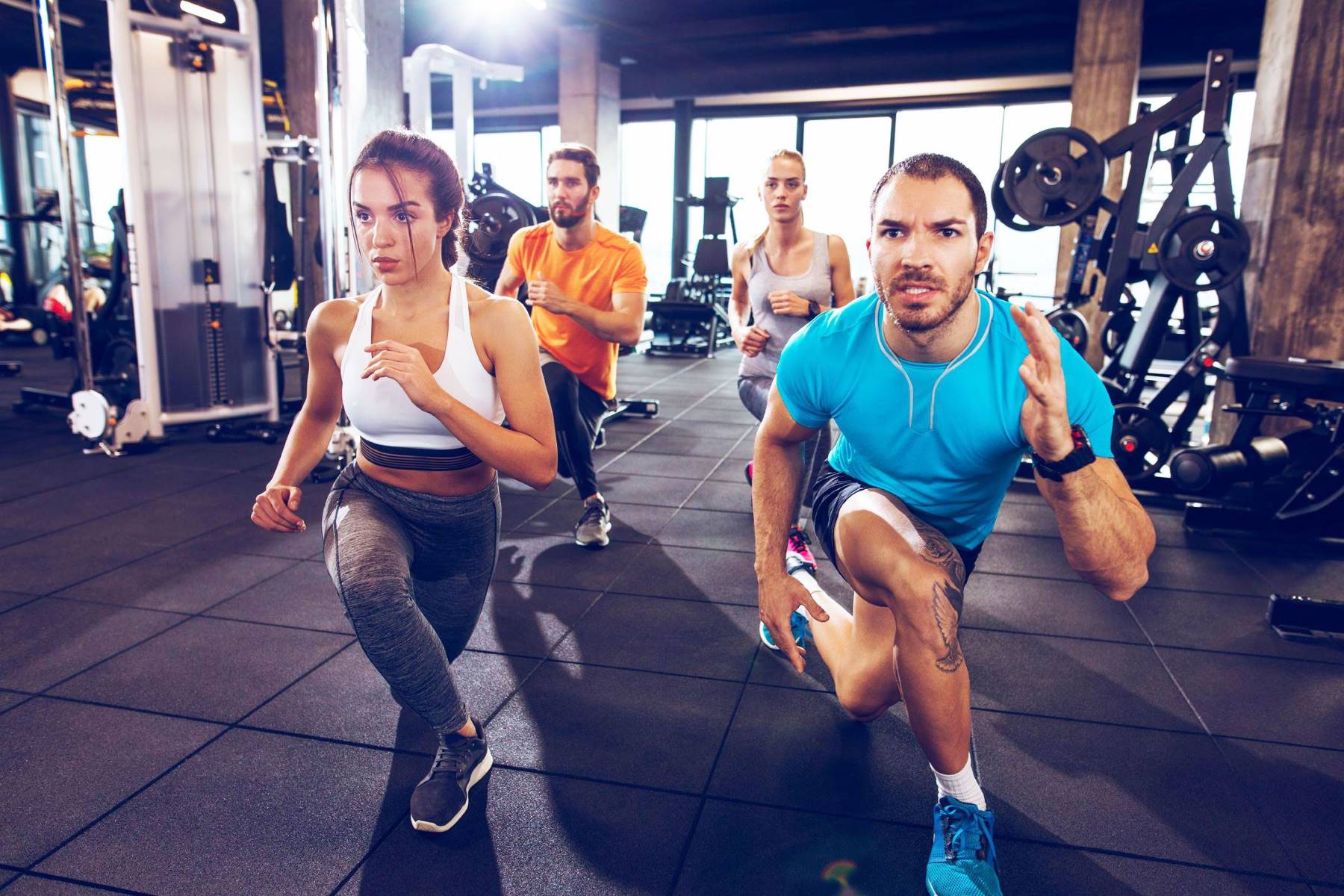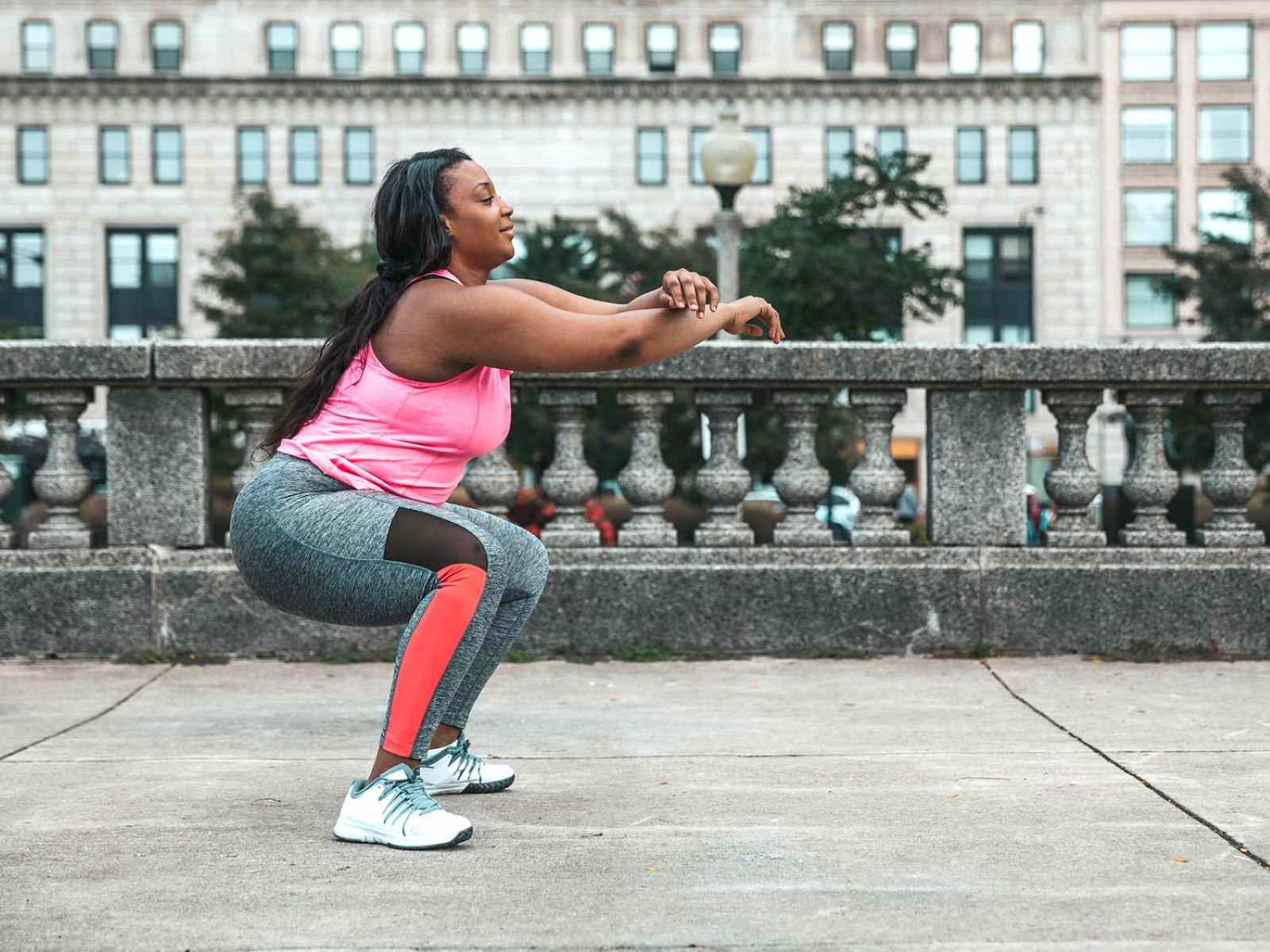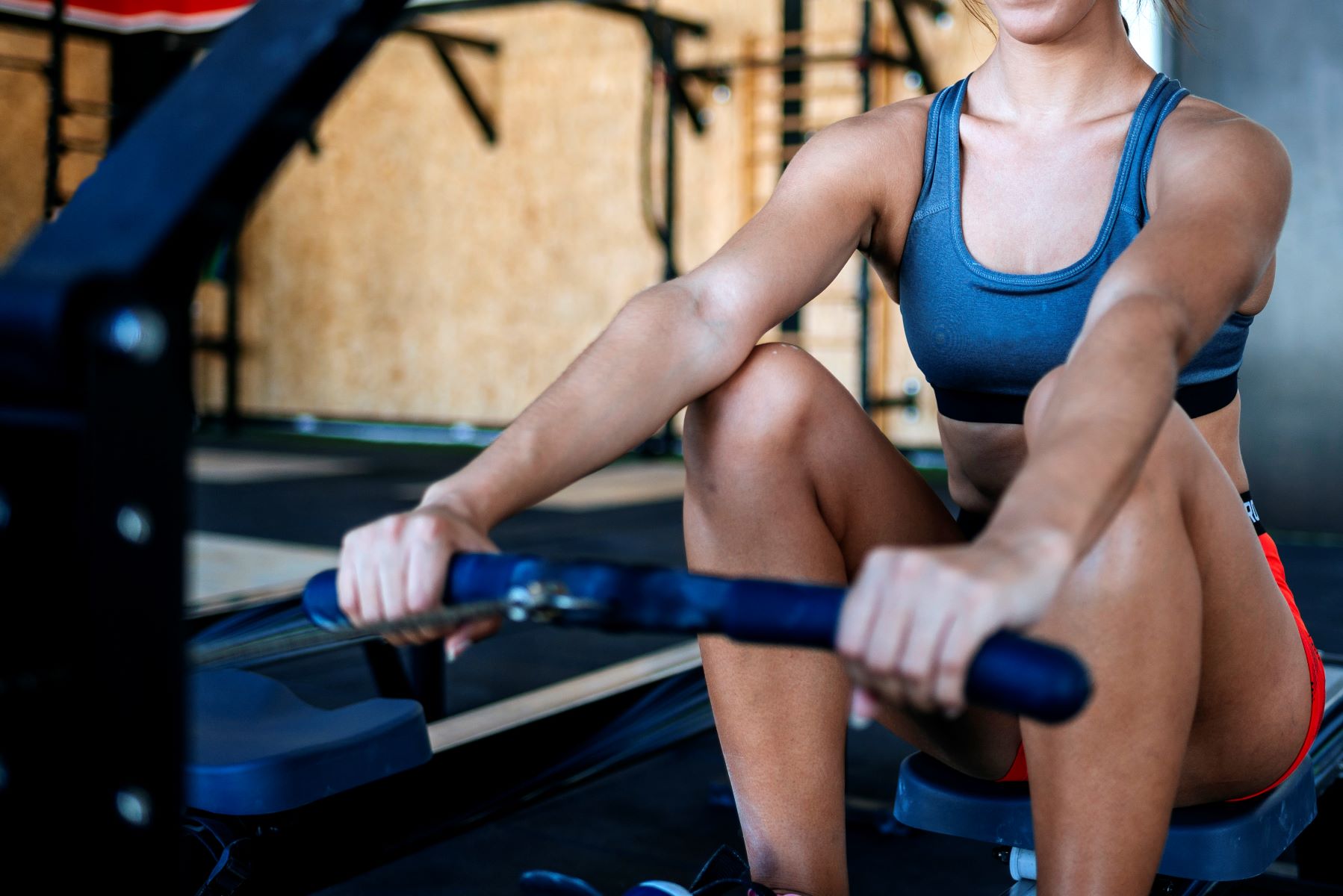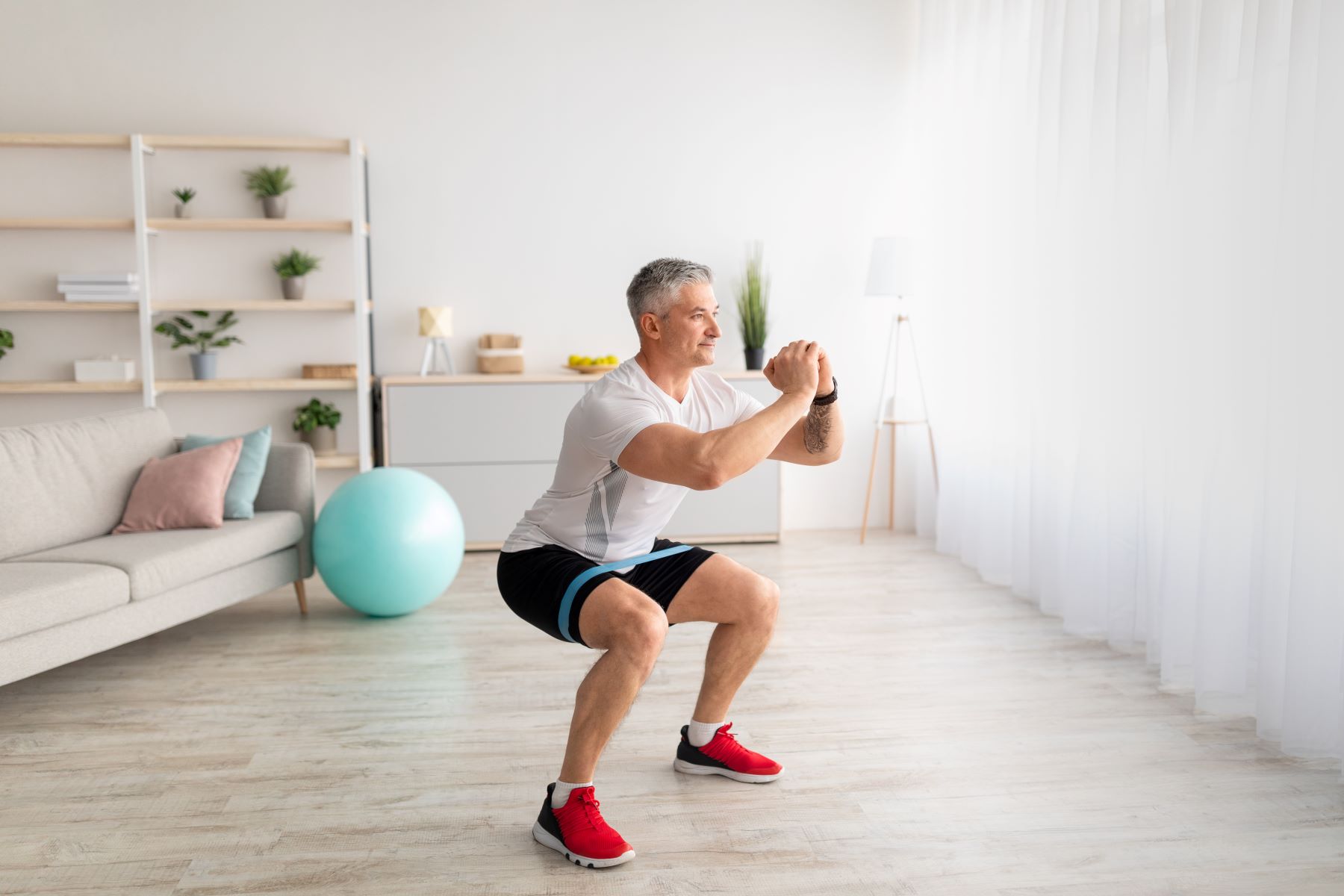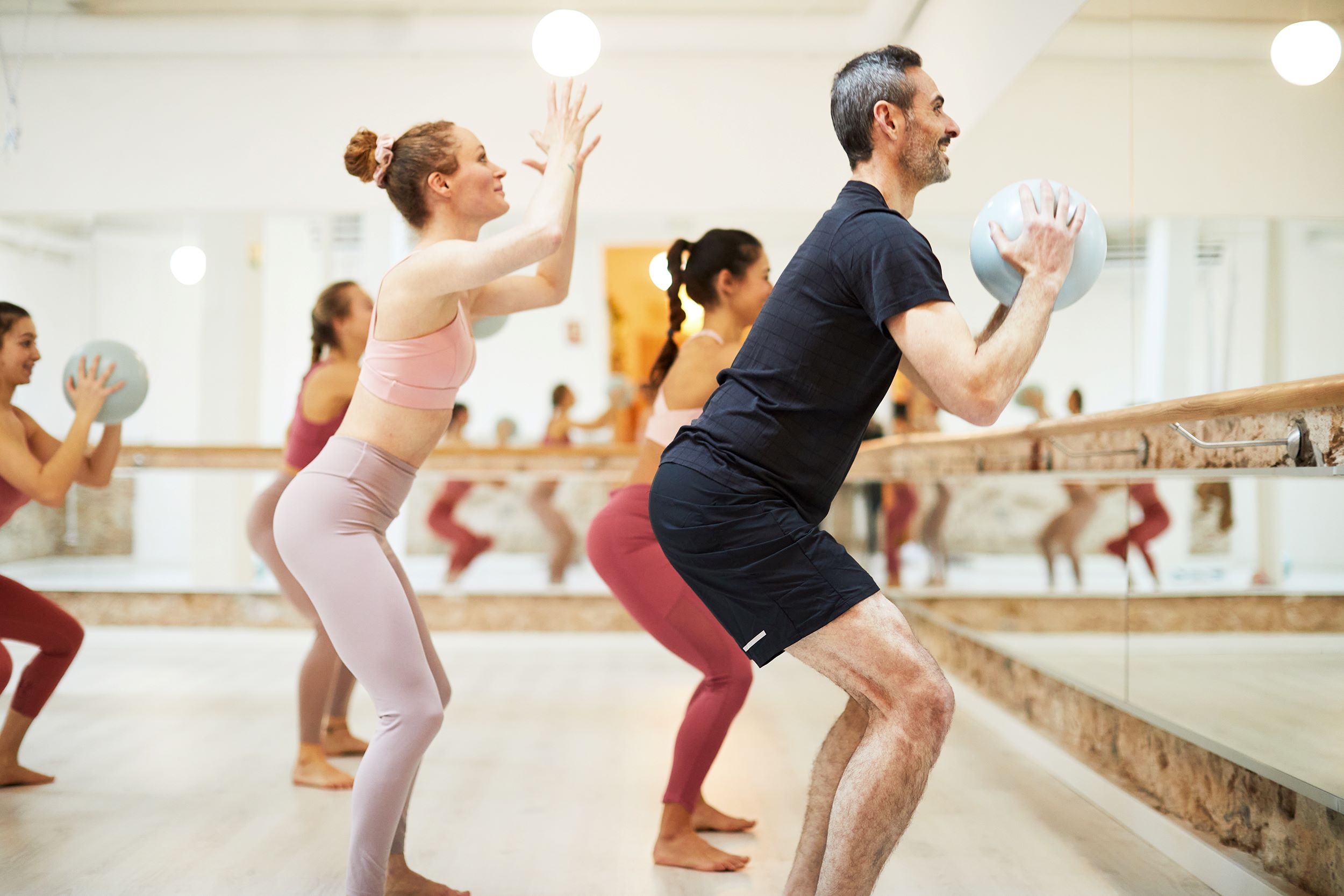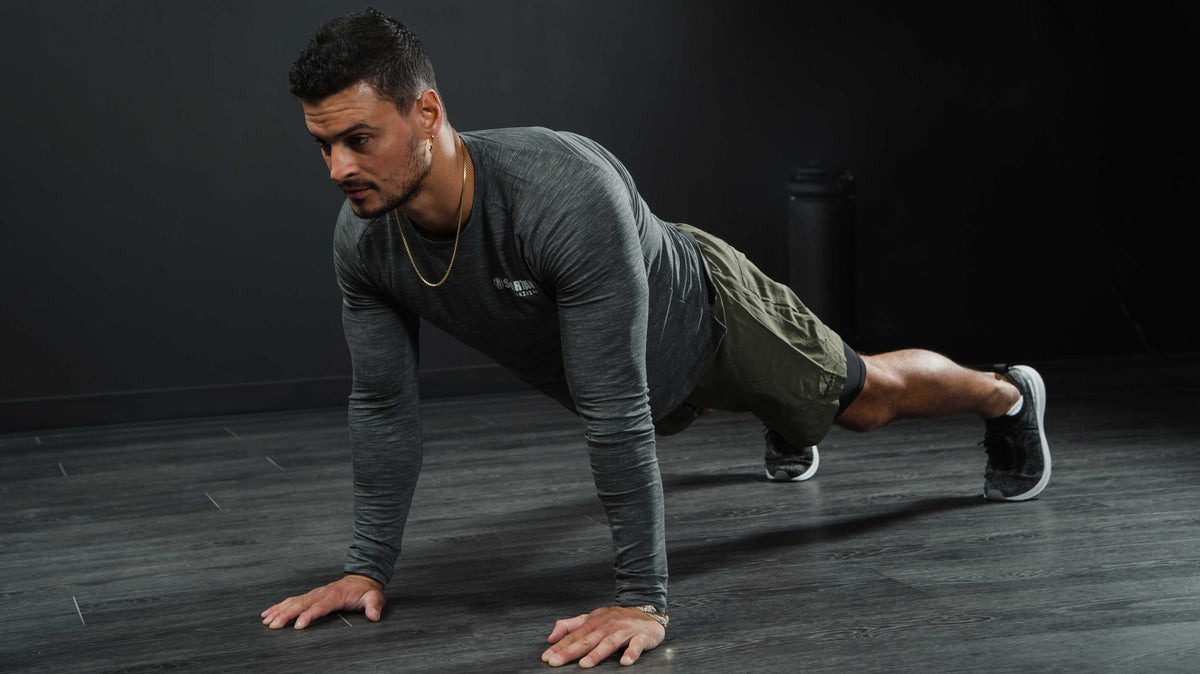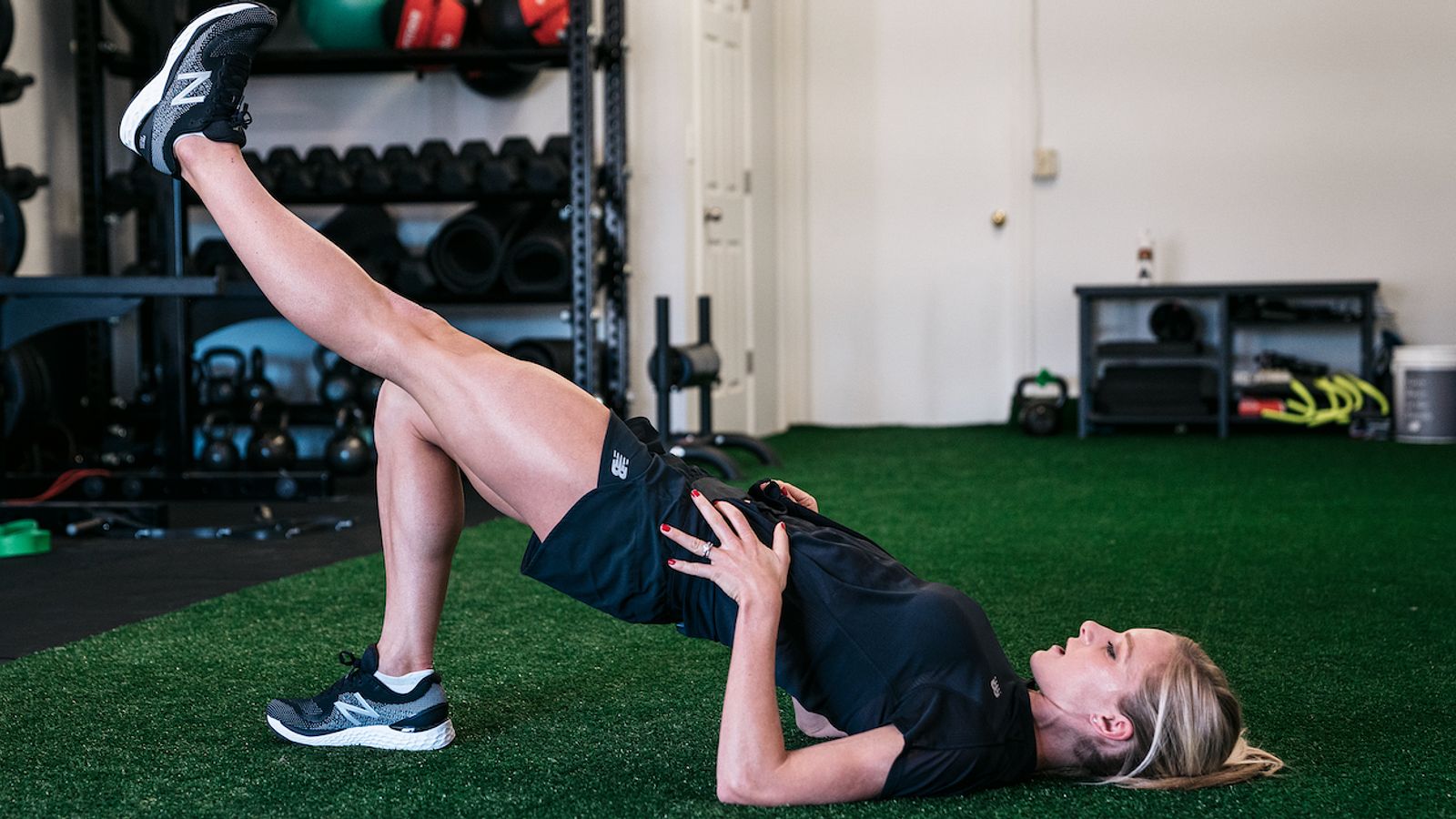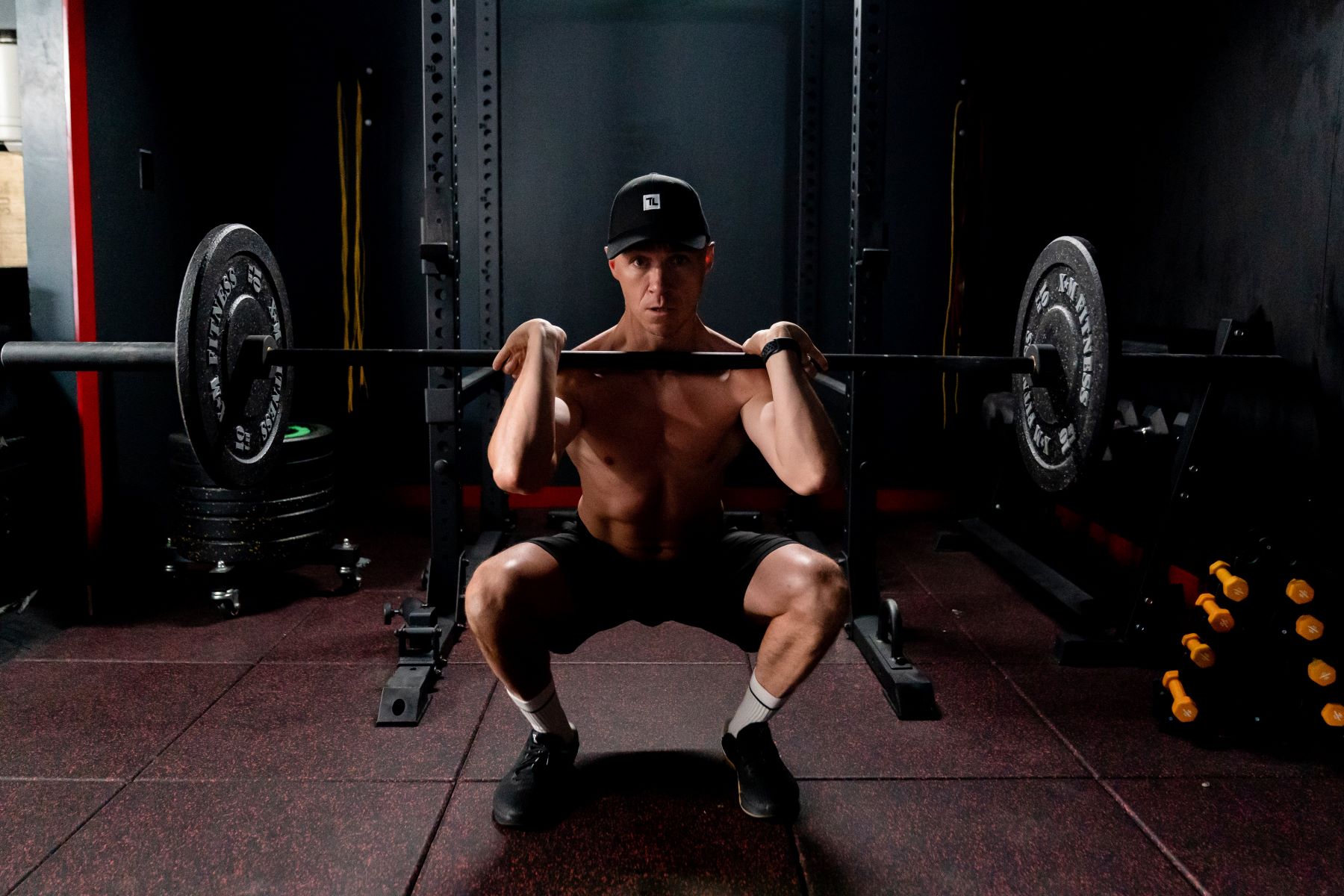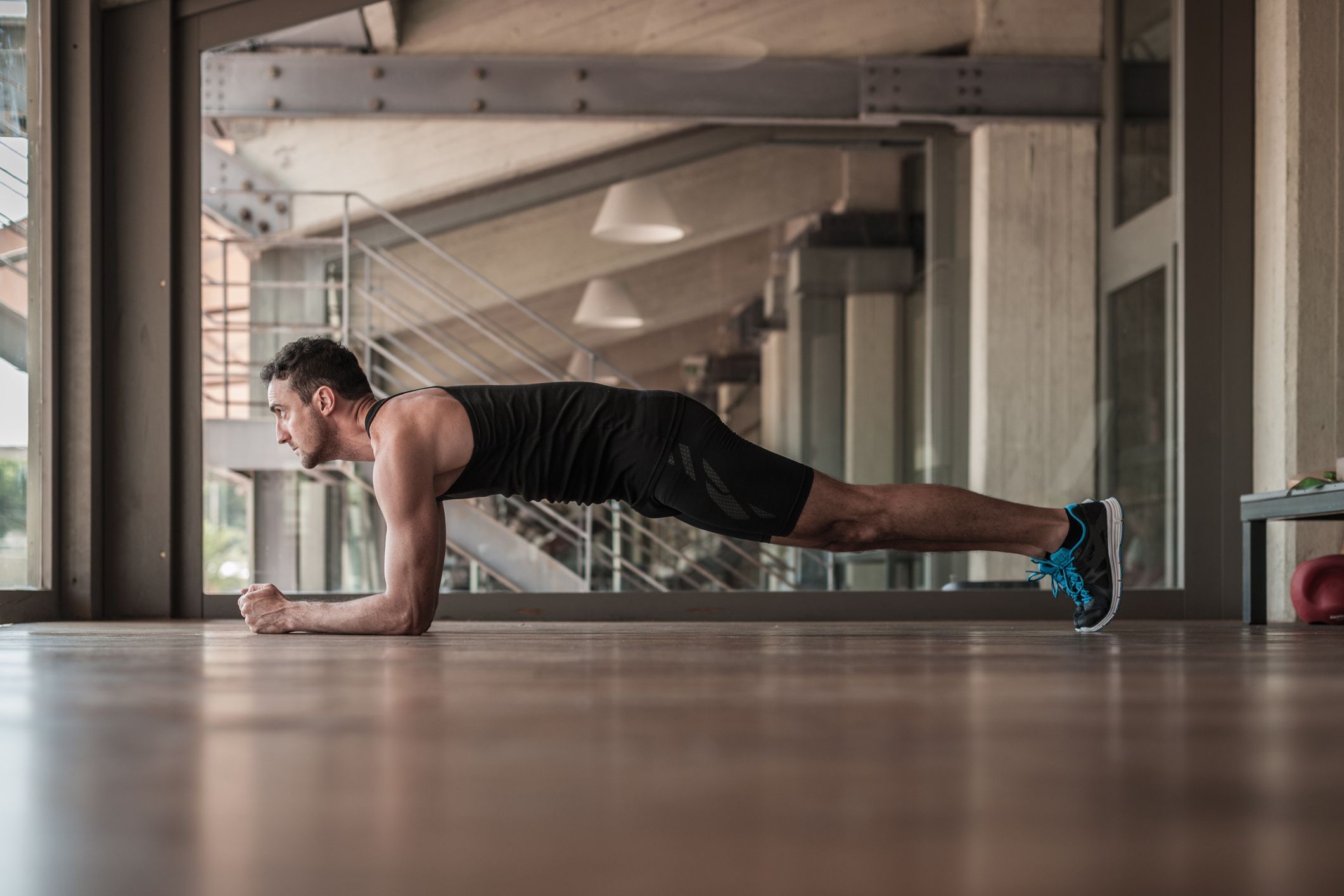

Featured
What Do Planks Workout
Modified: August 19, 2023
Strengthen your core and build endurance with the featured plank workouts. Discover the benefits and variations of planks to enhance your fitness routine.
Introduction
Planks are one of the most effective exercises for strengthening the core muscles and improving overall body stability. They are simple yet powerful movements that have gained popularity among fitness enthusiasts and athletes alike. Unlike traditional sit-ups or crunches, planks engage multiple muscles simultaneously, making them a highly efficient workout option.
Planks primarily target the abdominal muscles, including the rectus abdominis, transverse abdominis, and obliques. However, they also engage other important muscle groups such as the lower back, glutes, shoulders, and legs, making them a full-body exercise.
One of the main advantages of plank exercises is their versatility. You can perform planks anywhere, as they require no special equipment. Additionally, they can be modified to suit different fitness levels, from beginners to advanced athletes. Whether you’re looking to improve core strength, enhance posture, or increase overall body stability, incorporating planks into your workout routine can deliver excellent results.
This article explores the benefits of doing planks, the specific muscles targeted by this exercise, various plank variations, proper form and technique, common mistakes to avoid, and provides a sample plank workout routine to help you get started on your plank journey.
Benefits of Doing Planks
Planks offer a wide range of benefits for individuals of all fitness levels. Incorporating regular plank exercises into your workout routine can yield the following advantages:
1. Core Strength: Planks engage multiple core muscles, including the abdominals, obliques, and lower back. By consistently performing planks, you can develop a strong core, which not only enhances your overall stability but also helps prevent back pain and improve posture.
2. Stability and Balance: As planks require holding a static position, they help improve your body’s stability and balance. Strengthening the core, shoulders, and legs through regular planking can significantly enhance your overall stability, benefiting you in various physical activities and sports.
3. Increased Flexibility: Planks stretch and lengthen several muscles in the body, including the shoulders, hamstrings, and arches of the feet. By improving flexibility in these areas, planks can help prevent injuries and improve overall mobility.
4. Improved Posture: Weak core muscles can lead to poor posture, contributing to neck and shoulder pain. Regular plank exercises can strengthen the core and back muscles, promoting better alignment and reducing the risk of postural issues.
5. Enhanced Metabolism: Planks activate multiple muscle groups, leading to increased calorie burning and metabolic rate. This can aid in weight management and improve overall body composition.
6. Better Athletic Performance: Planks are a functional exercise that mimics many real-life movements and strengthens the muscles necessary for athletic performance. By improving core strength, stability, and balance, planking can enhance your performance in sports and physical activities.
7. Time-Efficient Exercise: Planks can be done in a short amount of time, making them an ideal choice for individuals with a busy schedule. Even a few minutes of plank exercises can provide significant benefits.
By incorporating planks into your workout routine, you can experience these benefits and more. However, it’s essential to perform planks correctly and progress gradually to avoid any potential injuries or strain. In the following sections, we will explore the specific muscles targeted by planks, different variations, proper form and technique, common mistakes to avoid, and provide a sample plank workout routine to help you get started on your plank journey.
Muscles Targeted by Planks
Planks are renowned for their effectiveness in targeting and strengthening the core muscles. However, this exercise engages multiple muscle groups throughout the body. Here are the key muscles targeted by planks:
1. Rectus Abdominis: Planks primarily activate the rectus abdominis, commonly known as the “six-pack” muscles. This muscle group is responsible for flexing the spine and maintaining core stability while performing planks.
2. Transverse Abdominis: The transverse abdominis is often referred to as the “corset” or “deep core” muscle. It wraps around the abdomen, providing stability and support to the spine. Planks engage the transverse abdominis, helping to strengthen and tighten the core.
3. Obliques: The obliques are located on the sides of the abdomen, running diagonally from the ribs to the hips. Planks engage both the external and internal obliques, helping to develop strong side abdominal muscles and improve overall core stability.
4. Lower Back Muscles: Planks require the activation of the erector spinae, a group of muscles that run along the spine. These muscles help stabilize the back and maintain proper posture during planks.
5. Glutes: Planks engage the gluteus maximus, medius, and minimus muscles in the buttocks. By squeezing the glutes during planks, you further activate and strengthen these muscles, contributing to overall core stability.
6. Shoulders: Planks target the shoulders and surrounding muscles, such as the deltoids and trapezius. The shoulders play a crucial role in maintaining the proper plank position and supporting body weight.
7. Legs: While planks primarily focus on the core, they also engage the muscles in the legs, including the quadriceps, hamstrings, and calves. These muscles work together to stabilize the body and create a strong foundation during the plank exercise.
By targeting these key muscle groups, planks provide a comprehensive workout for the entire core, improving strength, stability, and overall body function. Engaging the legs, glutes, and shoulders also adds an additional challenge and further enhances the benefits of this exercise.
In the next section, we will explore different variations of plank exercises to target specific muscle groups and add variety to your workout routine.
Variations of Plank Exercises
Planks offer a variety of options for targeting specific muscle groups and adding variety to your workout routine. Here are some popular variations of plank exercises:
1. High Plank: The high plank is the most basic form of plank exercise. Start in a push-up position with your hands directly under your shoulders. Keep your body in a straight line from head to heels and hold the position for the desired time. This variation primarily targets the core muscles.
2. Low Plank: The low plank, also known as the forearm plank, is performed with your forearms resting on the ground instead of your hands. Maintain a straight line from head to heels, engaging the core muscles and keeping the forearms parallel to each other. This variation targets the same muscle groups as the high plank but places more emphasis on the upper body and shoulders.
3. Side Plank: The side plank is performed by lying on one side, supported by either the forearm or the hand, with the body in a straight line. This variation primarily targets the obliques and helps improve core stability and lateral strength on each side of the body.
4. Plank with Leg Lift: From the high plank position, lift one leg off the ground while keeping the core engaged and hips stable. Alternate legs or hold the lift on each side for an extra challenge. This variation targets the glutes, hamstrings, and quadriceps while also engaging the core muscles.
5. Plank Jacks: Begin in a high plank position, then jump both feet out wide, just like performing a jumping jack. Jump the feet back together. This dynamic movement adds cardio and works the core, shoulders, and legs simultaneously.
6. Spiderman Plank: From the high plank position, bring one knee towards the elbow on the same side of the body. Alternate sides, drawing the knees in a spiderman-like movement. This variation targets the obliques, hip flexors, and core muscles, adding an extra challenge to the plank exercise.
7. Plank with Shoulder Taps: Begin in a high plank position and lift one hand off the ground to touch the opposite shoulder. Alternate sides, maintaining a stable and engaged core throughout the movement. This variation targets the core, shoulders, and stability muscles.
These are just a few examples of plank variations you can incorporate into your routine. By trying different variations, you can target specific muscle groups and add variety to your workout, keeping it challenging and engaging. Remember to maintain proper form and gradually increase the difficulty level as your strength and stability improve.
In the next section, we will discuss the proper form and technique for performing planks to maximize results and minimize the risk of injuries.
Proper Form and Technique for Planks
Performing planks with proper form and technique is crucial to maximize the benefits and minimize the risk of injuries. Here are some key tips for maintaining proper form during planks:
1. Alignment is key: Start in a high plank position with your hands or forearms directly under your shoulders. Your body should form a straight line from head to heels, avoiding any sagging or arching of the back. Engage the core muscles throughout the exercise.
2. Keep a neutral neck and spine: Avoid straining your neck by keeping your gaze towards the floor, about 6-12 inches in front of you. Your neck and spine should be in a neutral position, aligned with the rest of your body.
3. Engage your core: The core muscles should be activated and tight throughout the plank. Think of pulling your belly button towards your spine to engage the deep core muscles, including the transverse abdominis.
4. Don’t forget about your breath: Maintain a steady and controlled breathing pattern while holding the plank position. Inhale deeply through your nose and exhale slowly through your mouth.
5. Avoid overarching or sagging: Ensure that your hips are not sagging towards the ground or lifted too high. Find the perfect balance where your body is in a straight line, parallel to the floor.
6. Prevent shoulder tension: If you’re performing a high plank with hands, make sure your shoulders are directly over your wrists. If you’re doing a low plank with forearms, ensure your elbows are in line with your shoulders, and your forearms are parallel to each other.
7. Start with shorter holds: If you are a beginner or new to planks, start with shorter holds, such as 10-15 seconds, and gradually increase the duration as your strength improves. Quality and proper form are more important than quantity.
Remember, it’s essential to listen to your body and not push yourself beyond your limits. If you experience pain or discomfort, modify the exercise or consult a fitness professional for guidance.
By following these guidelines and maintaining proper form and technique, you can maximize the effectiveness of the plank exercise and minimize the risk of injuries. In the next section, we will discuss common mistakes to avoid while doing planks to ensure you get the most out of your workouts.
Common Mistakes to Avoid While Doing Planks
While planks are a highly effective exercise, there are several common mistakes that people make while performing them. By being aware of these mistakes and avoiding them, you can ensure the proper execution of the exercise and maximize your results. Here are some common mistakes to avoid while doing planks:
1. Sinking or sagging hips: Allowing your hips to sink towards the ground or lift too high disrupts the proper alignment and reduces the engagement of core muscles. Keep your body in a straight line from head to heels throughout the plank, maintaining core stability.
2. Arching or rounding the back: Avoid arching or rounding your back during planks. This not only places excessive strain on the spine but also reduces the effectiveness of the exercise. Keep your spine neutral and engage the core to prevent any excessive movement in the back.
3. Neglecting proper shoulder and hand placement: Improper hand or shoulder placement can lead to discomfort and potential shoulder injuries. In a high plank, ensure that your hands are directly under your shoulders, and in a low plank, your forearms are parallel to each other, with elbows aligned under shoulders.
4. Holding your breath: Holding your breath during planks can limit oxygen flow to the muscles and increase tension in the body. Remember to maintain a steady breathing pattern, inhaling through your nose and exhaling through your mouth, to optimize your performance and maintain relaxation.
5. Poor core engagement: Many individuals forget to properly engage their core muscles during planks. To maximize the effectiveness of the exercise, actively brace your abs by pulling your belly button towards your spine and maintaining that engagement throughout the duration of the plank.
6. Relying solely on time: Focusing solely on the duration of the plank can lead to compromising form and technique. Quality trumps quantity when it comes to planks. Instead of trying to hold a plank for as long as possible, focus on maintaining proper form with shorter holds, gradually increasing duration as your strength and endurance improve.
7. Neglecting proper warm-up: It’s important to warm up your body before performing planks to prevent injuries and enhance muscle activation. Incorporate dynamic stretches and movements to prepare your muscles for the exercise.
By avoiding these common mistakes and focusing on proper form and technique, you can maximize the benefits of planks and reduce the risk of injuries. In the following section, we will provide you with a sample plank workout routine to help you incorporate planks into your fitness regimen.
A Sample Plank Workout Routine
Incorporating planks into your workout routine can help you build core strength, improve stability, and enhance overall body function. Here’s a sample plank workout routine that you can follow to challenge yourself and see progress over time:
- 1. High Plank: Start with a high plank and hold for 30 seconds. Focus on maintaining proper form and engaging your core.
- 2. Low Plank: Transition to a low plank and hold for 30 seconds. Keep your forearms parallel and maintain a straight line from head to heels.
- 3. Side Plank (Right Side): Roll to your right side and lift your body into a side plank position. Hold for 30 seconds, keeping your body in a straight line and engaging your obliques.
- 4. Side Plank (Left Side): Roll to your left side and perform a side plank on the opposite side. Hold for 30 seconds, maintaining proper form and engaging your oblique muscles.
- 5. Plank with Leg Lift: Return to a high plank position and lift one leg off the ground, holding for 15 seconds. Alternate legs and repeat for a total of three sets on each leg.
- 6. Plank Jacks: Perform plank jacks by jumping your feet apart and back together while maintaining a high plank position. Do three sets of 15 to 20 repetitions.
- 7. Plank with Shoulder Taps: Return to a high plank position and tap your right hand to your left shoulder, then alternate to tap your left hand to your right shoulder. Perform three sets of 10 to 15 taps on each side.
Remember to take short breaks between exercises as needed, but try to keep the rest periods relatively short to maintain an elevated heart rate and challenge your muscles. As you progress, you can increase the duration of each plank or the number of sets and repetitions.
Make sure to pair this plank workout routine with other exercises that target different muscle groups for a well-rounded fitness program. As always, listen to your body and modify exercises as necessary to prevent any discomfort or injury. Consulting with a fitness professional can also help ensure that you’re performing the exercises correctly and safely.
By incorporating this sample plank workout routine into your fitness regimen on a regular basis, you can increase core strength, improve stability, and enhance your overall body function.
Conclusion
Planks are a highly effective exercise for strengthening the core, improving stability, and enhancing overall body function. By regularly incorporating planks into your workout routine, you can reap numerous benefits, such as increased core strength, improved posture, enhanced stability, and better athletic performance.
During planks, multiple muscle groups are engaged, including the abdominals, obliques, lower back, glutes, shoulders, and legs. This full-body engagement makes planks a time-efficient exercise that can be done anywhere, without the need for specialized equipment.
Proper form and technique are key when performing planks to maximize results and reduce the risk of injuries. Maintaining a straight body alignment, engaging the core, and avoiding common mistakes, such as sagging hips or holding your breath, will ensure the effectiveness of your planking exercise.
There are also various plank variations that target specific muscle groups and provide variety to your workout routine. Incorporating side planks, plank jacks, leg lifts, or shoulder taps can challenge different areas of the body and keep your workouts engaging and effective.
To assist you in getting started, we provided a sample plank workout routine that you can follow or modify according to your fitness level and goals. Remember to gradually increase the difficulty level and listen to your body, making modifications when necessary.
Incorporating planks into your fitness regimen can lead to notable improvements in core strength, stability, posture, and overall body function. However, it’s important to complement your plank workouts with a balanced exercise program that includes cardio, strength training, flexibility, and rest for optimal fitness results.
So why wait? Start incorporating planks into your workout routine today and experience the numerous benefits this exercise has to offer. Strengthen your core, improve your stability, and enhance your overall fitness with the power of planks!

